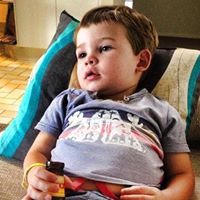Adam C Kerr
age ~41
from Edinburg, VA
- Also known as:
-
- Adam Kerr Kerr
- Phone and address:
-
572 Vista Ln, Edinburg, VA 22824
(540)9849051
Adam Kerr Phones & Addresses
- 572 Vista Ln, Edinburg, VA 22824 • (540)9849051
- San Jose, CA
- Sunnyvale, CA
- Reston, VA
- Arlington, VA
- Centreville, VA
- Falls Church, VA
- Fairfax, VA
- State College, PA
- 1577 Autumn Ridge Cir, Reston, VA 20194
Work
-
Position:Professional/Technical
Education
-
Degree:Graduate or professional degree
Isbn (Books And Publications)

Name / Title
Company / Classification
Phones & Addresses
Owner
Kerr Roofing Inc.
Kerr's Roofing. 2290392 Ontario Inc.
Roofing Contractors. Soffit & Fascia. Shingles. Home Improvements. Contractors - Gutters
Kerr's Roofing. 2290392 Ontario Inc.
Roofing Contractors. Soffit & Fascia. Shingles. Home Improvements. Contractors - Gutters
65 Grant Timmins Drive, Kingston, ON K7M 8N3
(613)5614061
(613)5614061
Owner
Kerr Roofing Inc
Roofing Contractors · Soffit & Fascia · Shingles · Home Improvements · Contractors - Gutters
Roofing Contractors · Soffit & Fascia · Shingles · Home Improvements · Contractors - Gutters
(613)5614061
Us Patents
-
Calibration Of Differential Frequency-Dependent Characteristics Of A Radio Communications System
view source -
US Patent:6570527, May 27, 2003
-
Filed:Sep 28, 2001
-
Appl. No.:09/967258
-
Inventors:Erik D. Lindskog - Sunnyvale CA
Mitchell D. Trott - Mountain View CA
Adam B. Kerr - Menlo Park CA -
Assignee:ArrayComm, Inc. - San Jose CA
-
International Classification:G01S 740
-
US Classification:342174, 342 42, 342 43, 342165, 342173
-
Abstract:A method and apparatus are provided that determine a frequency dependent calibration vector for a set of transmit or receive chains of a radio communications system using only differential phase and amplitude between the transmit chains and the receive chains, respectively. In one embodiment, the invention includes an antenna array adapted to transmit and receive radio communications signals with a plurality of other terminals, a transmit chain to transmit a calibration signal through the antenna array to a transponder on at least two different frequency bands, and a receive chain to receive through the antenna array a transponder signal from the transponder, the transponder signal being received on at least two different frequency bands and being based on the calibration signal. A signal processor determines a frequency dependent calibration vector based on the at least two frequency bands of the transponder signal as received through the receive chain by comparing relative characteristics for the transponder signal at a first one of the at least two frequencies to relative characteristics for the transponder signal at a second one of the at least two frequencies.
-
Calibration Of Differential Frequency-Dependent Characteristics Of A Radio Communications System
view source -
US Patent:6747594, Jun 8, 2004
-
Filed:Nov 14, 2002
-
Appl. No.:10/294948
-
Inventors:Erik D. Lindskog - Sunnyvale CA
Mitchell D. Trott - Mountain View CA
Adam B. Kerr - Menlo Park CA -
Assignee:ArrayComm, Inc. - San Jose CA
-
International Classification:G01S 740
-
US Classification:342174, 342 42, 342 43, 342165, 342173
-
Abstract:A method and apparatus are provided that determine a frequency dependent calibration vector for a set of transmit or receive chains of a radio communications system using only differential phase and amplitude between the transmit chains and the receive chains, respectively. In one embodiment, the invention includes an antenna array adapted to transmit and receive radio communications signals with a plurality of other terminals, a transmit chain to transmit a calibration signal through the antenna array to a transponder on at least two different frequency bands, and a receive chain to receive through the antenna array a transponder signal from the transponder, the transponder signal being received on at least two different frequency bands and being based on the calibration signal. A signal processor determines a frequency dependent calibration vector based on the at least two frequency bands of the transponder signal as received through the receive chain by comparing relative characteristics for the transponder signal at a first one of the at least two frequencies to relative characteristics for the transponder signal at a second one of the at least two frequencies.
-
Frequency Dependent Calibration Of A Wideband Radio System Using Narrowband Channels
view source -
US Patent:6788948, Sep 7, 2004
-
Filed:Sep 28, 2001
-
Appl. No.:09/967767
-
Inventors:Erik D. Lindskog - Sunnyvale CA
Mitchell D. Trott - Mountain View CA
Adam B. Kerr - Menlo Park CA -
Assignee:ArrayComm, Inc. - San Jose CA
-
International Classification:G01S 1374
-
US Classification:455504, 455 634, 455 6714, 342368, 342371, 342372, 34235702
-
Abstract:A method and apparatus are provided that determine group delay for a set of transmit or receive chains over a wide frequency band without causing significant interference with simultaneous users of the system. In one embodiment, the invention includes an antenna array adapted to transmit and receive radio communications signals with a plurality of other terminals, the communications signals each using a particular minimum bandwidth, a transmit chain to transmit a calibration signal through the antenna array to a transponder on at least two different frequency bands within the minimum bandwidth, and a receive chain to receive through the antenna array a transponder signal from the transponder, the transponder signal being received on at least two different frequency bands and being based on the calibration signal. A signal processor determines a frequency dependent calibration vector based on the at least two frequency bands of the transponder signal as received through the receive chain.
-
Combined Open And Closed Loop Beam Forming In A Multiple Array Radio Communication System
view source -
US Patent:6865377, Mar 8, 2005
-
Filed:Jun 28, 2002
-
Appl. No.:10/187036
-
Inventors:Erik D. Lindskog - Sunnyvale CA, US
Adam B. Kerr - Menlo Park CA, US
Christopher Brunner - Sunnyvale CA, US
Mitchell D. Trott - Mountain View CA, US -
Assignee:ArrayComm, Inc. - San Jose CA
-
International Classification:H04B001/02
H04C007/02 -
US Classification:455101, 455522, 375299
-
Abstract:A method and apparatus are provided that can combine the benefits of beamforming with transmit diversity. In one embodiment, the invention includes sampling a signal received from a remote radio at elements of an antenna array, deriving spatial parameters for transmitting a signal to the remote radio from an antenna array, sampling the signal received from the remote radio at elements of at least one additional antenna array, and deriving spatial parameters for transmitting a signal to the remote radio from the at least one additional antenna array. The invention further includes generating diversity parameters for transmitting a signal to the remote radio using each antenna array as an element of a diversity array, and transmitting a signal to the remote radio using the spatial parameters and the diversity parameters.
-
Hard Decision-Based Decorrelator For Estimating Spatial Signatures In A Wireless Communications System
view source -
US Patent:6950630, Sep 27, 2005
-
Filed:Mar 13, 2003
-
Appl. No.:10/387933
-
Inventors:Todd H. Chauvin - Sunnyvale CA, US
Adam B. Kerr - Menlo Park CA, US
Athanasios A. Kasapi - San Francisco CA, US -
Assignee:ArrayComm, Inc. - San Jose CA
-
International Classification:H04B017/00
H04B001/38 -
US Classification:455 6711, 455561, 4555621, 4552261, 375210
-
Abstract:Spatial and temporal characteristics of received radio signals in a multiple user radio system can be estimated based on signals received from the users. In one embodiment, the invention includes measuring radio frequency signals received at different elements of an antenna system over time, the received signals corresponding at least in part to transmissions received from a system user, accumulating the signal measurements into a first matrix, generating a second matrix representing the transmissions of the system user, cross-correlating the first and second matrices to form a third matrix, and multiplying the third matrix with a product of the second matrix to form a fourth matrix in which the elements of the fourth matrix characterize the radio channel traversed by transmissions of the system user.
-
System And Related Methods For Clustering Multi-Point Communication Targets
view source -
US Patent:6973314, Dec 6, 2005
-
Filed:Sep 28, 2001
-
Appl. No.:09/967058
-
Inventors:Sarah Kate Wilson - Menlo Park CA, US
Todd Henry Chauvin - Sunnyvale AZ, US
Adam Bruce Kerr - Menlo Park CA, US
Christopher Brunner - Sunnyvale CA, US
Mitchell D. Trott - Mountain View CA, US
Athanasios A. Kapasi - San Francisco CA, US
Erik David Lindskog - Sunnyvale CA, US -
Assignee:ArrayComm LLC. - San Jose CA
-
International Classification:H04Q007/20
-
US Classification:4554521, 4554522, 455453
-
Abstract:A system and related methods for clustering multi-point communication targets is presented. According to one aspect of the invention, a method comprising measuring one or more performance characteristics associated for each of at least a subset of a plurality of targets in a wireless communication system, and selectively building one or more clusters, each cluster including one or more target(s) and sharing a wireless communication channel, based at least in part on the performance characteristics.
-
Symbol Estimation-Based Decorrelator For Estimating Spatial Signatures In A Wireless Communications System
view source -
US Patent:7047045, May 16, 2006
-
Filed:Mar 13, 2003
-
Appl. No.:10/387718
-
Inventors:James V. Steele - Santa Clara CA, US
Todd H. Chauvin - Sunnyvale CA, US
Adam B. Kerr - Menlo Park CA, US
Athanasios A. Kasapi - San Francisco CA, US -
Assignee:ArrayComm LLC - San Jose CA
-
International Classification:H04M 1/00
H04B 17/00 -
US Classification:4555621, 455 6711, 4552261
-
Abstract:Spatial and temporal characteristics of received radio signals in a multiple user radio system can be estimated based on signals received from the users. In one embodiment, the invention includes collecting measurements of radio frequency signals received at different elements of an antenna system over time, the received signals corresponding at least in part to transmissions received from a system user, collecting representations of the transmissions of the system user, cross-correlating the collected measurements and the collected representations, and comparing the cross-correlation to the collected measurements to form a characterization of the radio channel traversed by transmissions of the system user.
-
System And Related Methods For Clustering Multi-Point Communication Targets
view source -
US Patent:7299073, Nov 20, 2007
-
Filed:Oct 19, 2005
-
Appl. No.:11/254599
-
Inventors:Sarah Kate Wilson - Menlo Park CA, US
Todd Henry Chauvin - Sunnyvale AZ, US
Adam Bruce Kerr - Menlo Park CA, US
Christopher Brunner - Sunnyvale CA, US
Mitchell D. Trott - Mountain View CA, US
Athanasios A. Kapasi - San Francisco CA, US
Erik David Lindskog - Sunnyvale CA, US -
Assignee:ArrayComm, LLC - San Jose CA
-
International Classification:H04M 1/00
H04B 1/00
H04Q 7/20 -
US Classification:4555621, 455452, 455 631
-
Abstract:A system and related methods for clustering multi-point communication targets is presented. According to one aspect of the invention, a method comprising measuring one or more performance characteristics associated for each of at least a subset of a plurality of targets in a wireless communication system, and selectively building one or more clusters, each cluster including one or more target(s) and sharing a wireless communication channel, based at least in part on the performance characteristics.
Resumes

Adam Kerr
view sourceLocation:
Stockholm, Sweden
Industry:
Wireless
Skills:
Mobile Payments
Mobile Internet
Payments
Payment Services
Entrepreneurship
Start-ups
Mobile Banking
Mobile financial services
Emerging Payments
Emerging Technologies
Emerging Markets
Payment Gateways
Virtual Currency
Mobile Internet
Payments
Payment Services
Entrepreneurship
Start-ups
Mobile Banking
Mobile financial services
Emerging Payments
Emerging Technologies
Emerging Markets
Payment Gateways
Virtual Currency

Adam Kerr
view source
Adam Kerr
view source
Adam Kerr
view source
Adam Kerr
view sourceLocation:
United States

Adam Kerr
view sourceLocation:
Stockholm, Sweden
Industry:
Wireless
Skills:
Mobile Payments
Mobile Internet
Payments
Payment Services
Entrepreneurship
Start-ups
Mobile Banking
Mobile financial services
Emerging Payments
Emerging Technologies
Emerging Markets
Payment Gateways
Virtual Currency
Mobile Internet
Payments
Payment Services
Entrepreneurship
Start-ups
Mobile Banking
Mobile financial services
Emerging Payments
Emerging Technologies
Emerging Markets
Payment Gateways
Virtual Currency
Classmates

Adam Kerr
view sourceSchools:
Eastern Shore District High School Musquodoboit Harbour Swaziland 1994-1998
Community:
Angela Smith

Adam Kerr
view sourceSchools:
Paxon Hollow Middle School Broomall PA 1998-2002
Community:
Francine Manstein, Scott Nulton, Gary Oliver, Sidney Courtney, George Herman

Adam Kerr
view sourceSchools:
St. Andrew's Regional High School Victoria Saudi Arabia 1996-2000
Community:
Jamie Amos, Brandi Legere, Elisha Buckingham, Angie Power

Adam Kerr
view sourceSchools:
Viewmont High School Bountiful UT 1997-2001
Community:
Fernando Calabro, Tyson Burnham

Adam Kerr | Bullitt Centr...
view source
Rancho Cotate High School...
view sourceGraduates:
Corinne Fisher (1973-1977),
Christopher Cooney (1988-1992),
Rob Melia (1990-1994),
Adam Kerr Adam Kerr (1990-1994)
Christopher Cooney (1988-1992),
Rob Melia (1990-1994),
Adam Kerr Adam Kerr (1990-1994)

Eastern Shore District Hi...
view sourceGraduates:
Adam Kerr (1994-1998),
Sheila Keizer (1971-1975),
Star Wilson (1974-1978),
Mike Benjamin (1982-1986),
Bruce Cross (1970-1974),
Kevin Laybolt (1972-1977)
Sheila Keizer (1971-1975),
Star Wilson (1974-1978),
Mike Benjamin (1982-1986),
Bruce Cross (1970-1974),
Kevin Laybolt (1972-1977)

Nichols Elementary School...
view sourceGraduates:
Michael Appleford (1982-1986),
Adam Kerr (1985-1987),
Jill Hurst (1989-1994),
Malvina Khatib (1962-1966)
Adam Kerr (1985-1987),
Jill Hurst (1989-1994),
Malvina Khatib (1962-1966)
Plaxo

Adam Kerr
view source
Adam Kerr
view sourceBango
Myspace
Youtube
Flickr

Adam Ray Kerr
view source
Adam Mc Kerr
view source
Adam Kerr
view source
Adam Kerr
view source
Adam Kerr
view source
Adam Kerr
view source
Adam Kerr
view source
Adam Kerr
view sourceGoogleplus

Adam Kerr
Education:
Ganado H S, Ganado, TX
Tagline:
Software Design and likes computer games

Adam Kerr
Education:
Antioch Community High School
Relationship:
In_a_relationship

Adam Kerr

Adam Kerr

Adam Kerr

Adam Kerr

Adam Kerr

Adam Kerr
Get Report for Adam C Kerr from Edinburg, VA, age ~41



















